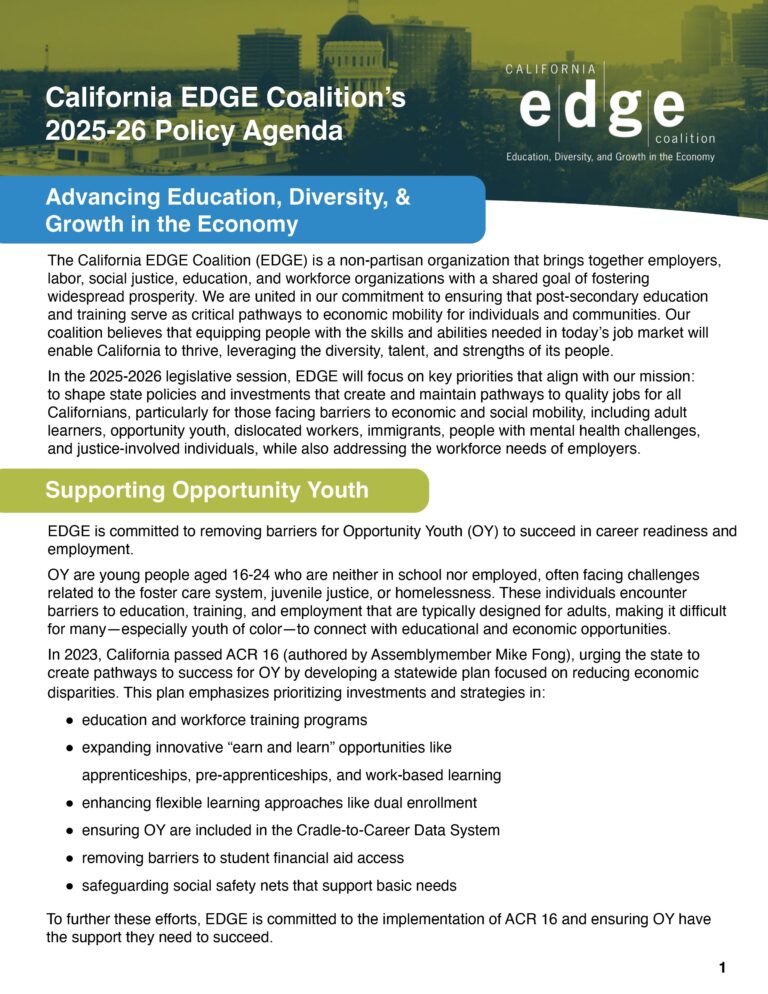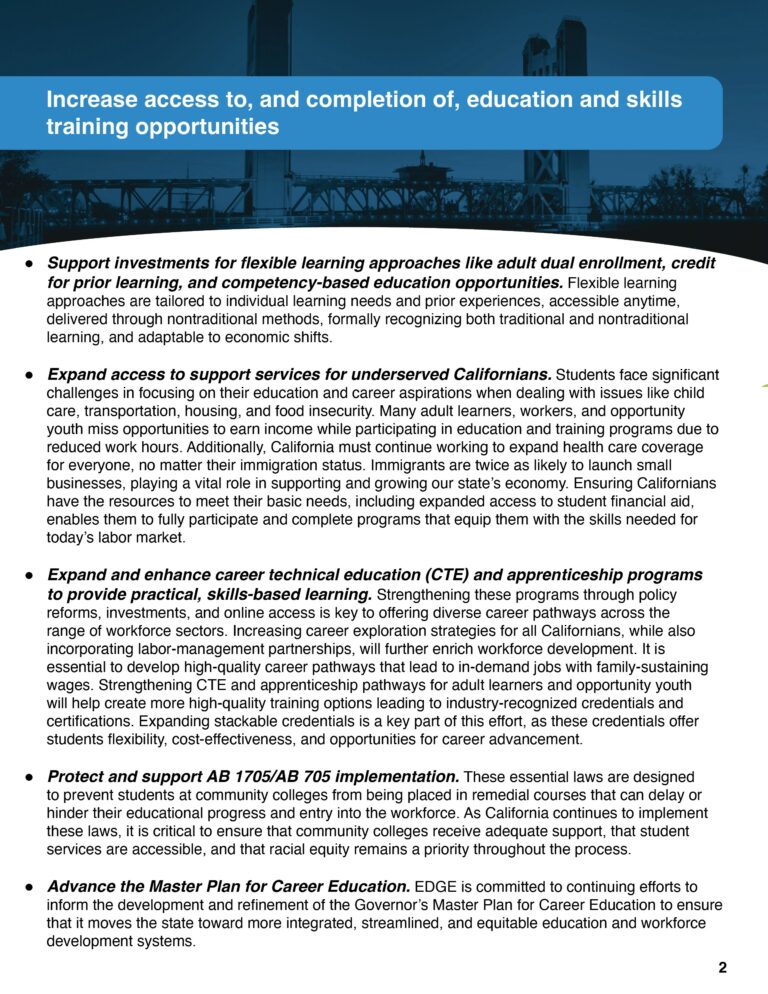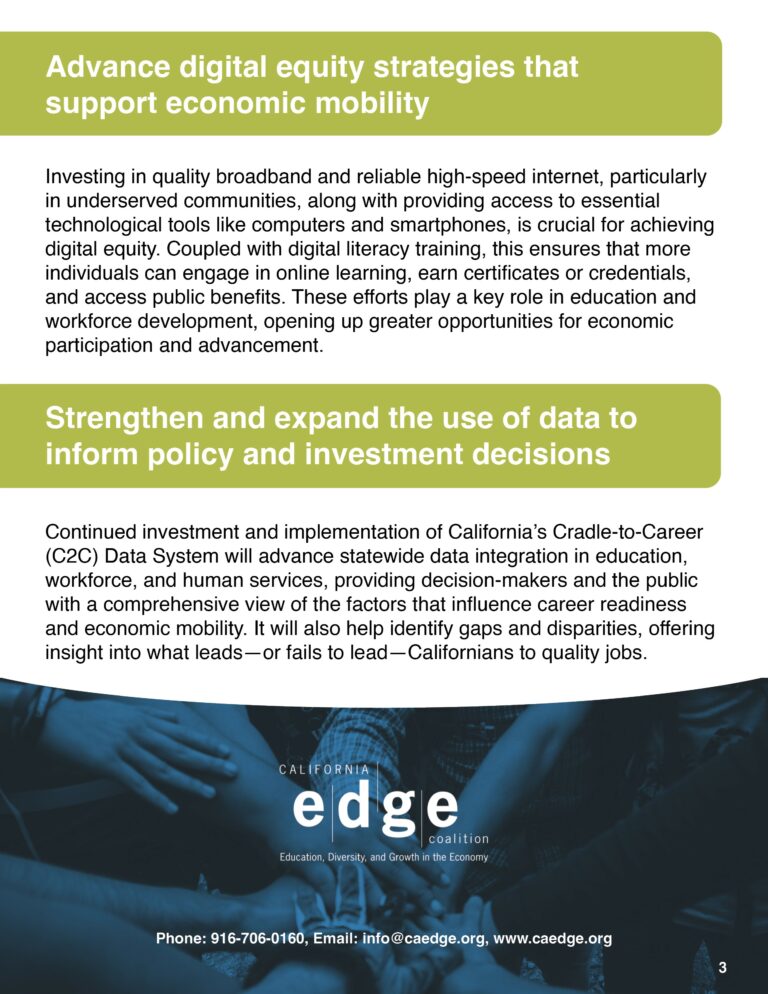


EDGE thanks the organizations listed below for endorsing our 2025–26 policy agenda.
Add your logo by signing on here.



EDGE thanks the organizations listed below for endorsing our 2025–26 policy agenda.
Add your logo by signing on here.